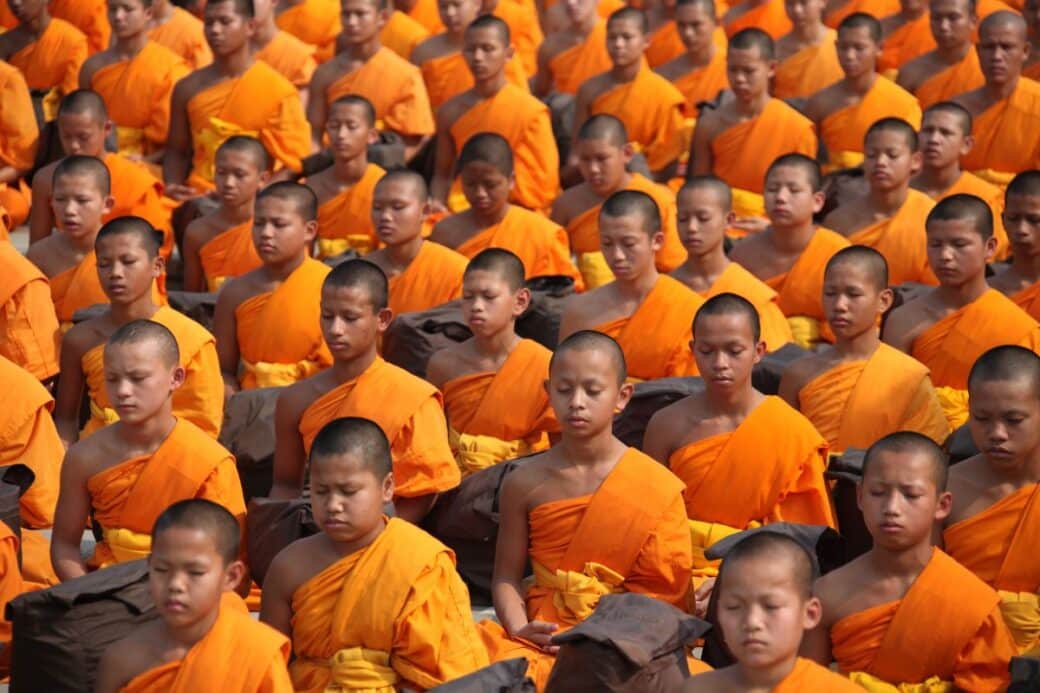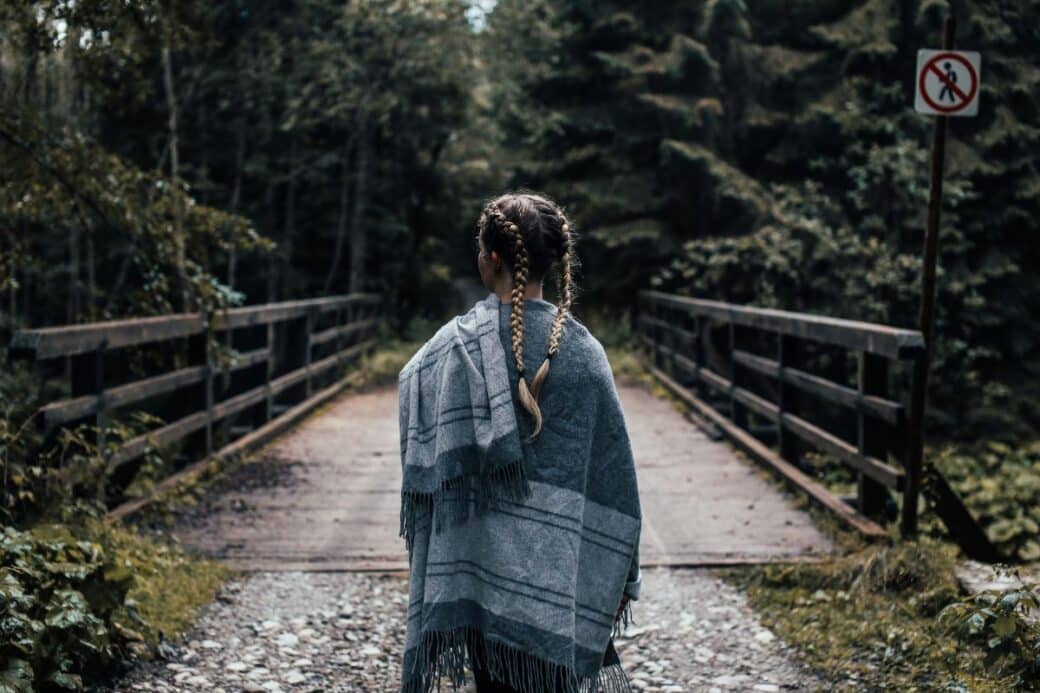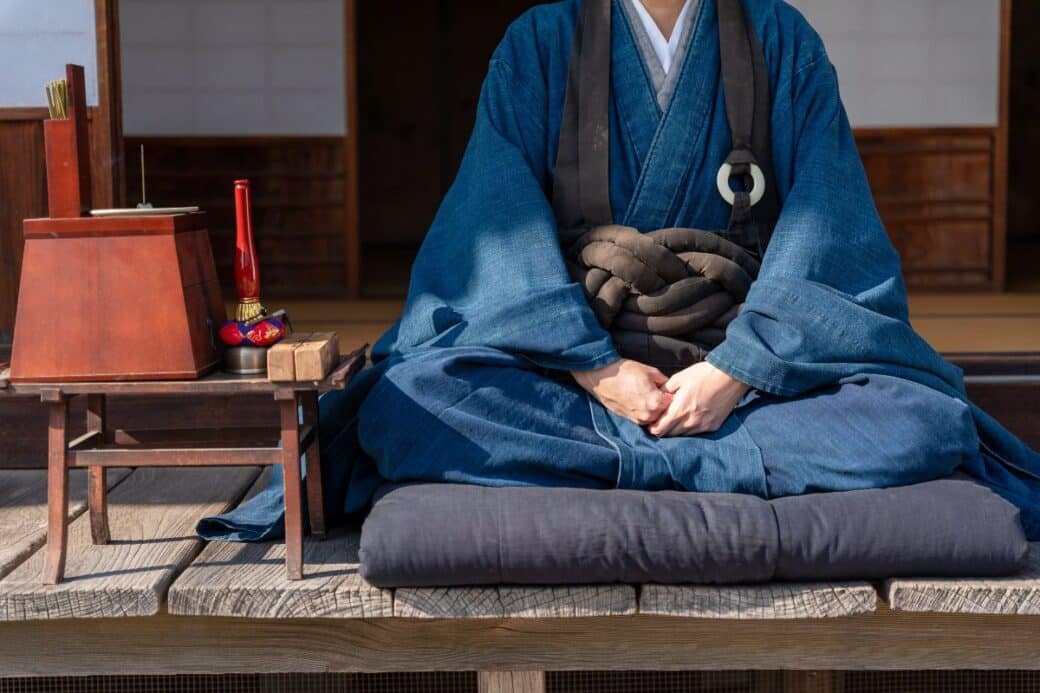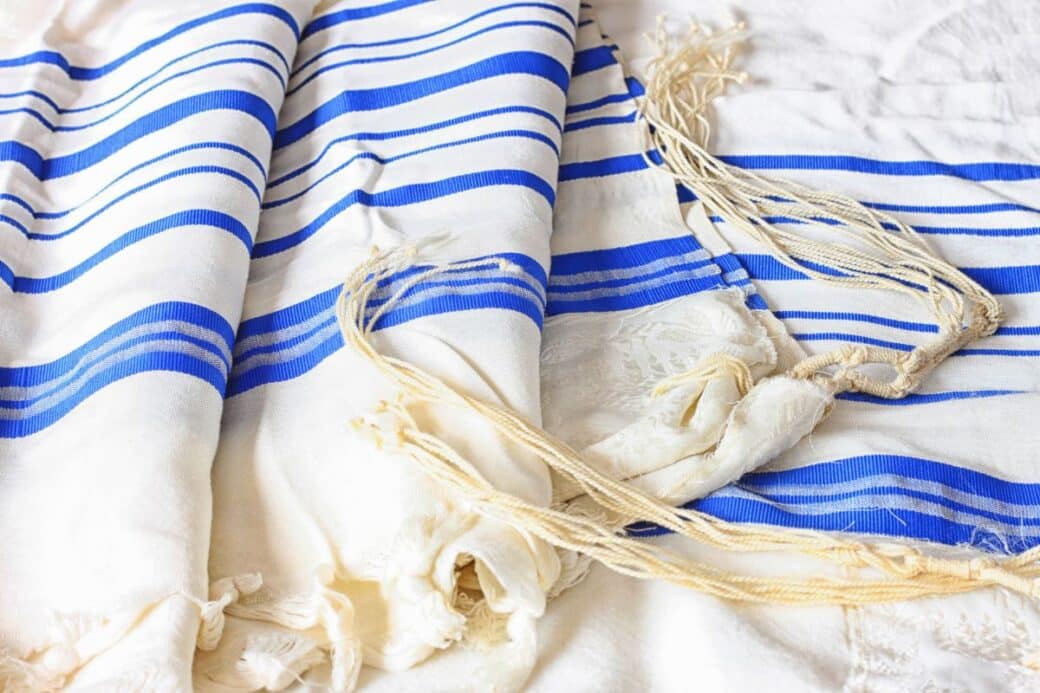If you’ve ever been curious about the fascinating world of Buddhism and its traditions, then wearing a Buddhist robe is a great way to immerse yourself in its culture. But don’t worry, wearing a Buddhist robe doesn’t have to be daunting or complicated. In fact, it can be quite simple and enjoyable once you understand the basics. So, grab your robe and join us as we embark on a journey to learn how to wear a buddhist robe with grace and respect.

How To Wear A Buddhist Robe: Understanding the Significance of Buddhist Robes
Buddhist robes hold great historical and cultural importance within the Buddhist tradition. These robes are not just ordinary pieces of clothing; they are considered sacred and symbolic. Understanding the significance of Buddhist robes helps deepen our appreciation for this traditional attire.
Historical Importance of Buddhist Robes
The history of Buddhist robes can be traced back to the time of the Buddha himself. During the time of his enlightenment, the Buddha discarded his royal garments and began wearing simple robes. This act marked a renunciation of worldly attachments and a commitment to the path of enlightenment.
Throughout the centuries, Buddhist monks and nuns have continued to wear robes as a symbol of their dedication to the Buddha’s teachings. The robes serve as a reminder of their vows and their commitment to a life of simplicity and mindfulness.
Symbolism Behind the Colors and Patterns
Buddhist robes often come in different colors and patterns, each carrying its own symbolism. The choice of color and pattern can vary depending on the Buddhist tradition and the robes’ purpose.
For example, saffron-colored robes are commonly associated with Theravada Buddhism and represent the middle path of simplicity and contentment. The orange color is said to symbolize the color of the Dharma, the teachings of the Buddha.
Other colors, such as dark brown, maroon, or gray, may be worn by monks or nuns from different Buddhist traditions. These colors symbolize modesty, renunciation, and detachment from worldly desires.
Patterns on the robes can also hold significant meaning. For example, the Dharma wheel, lotus flower, or other Buddhist symbols may be embroidered onto the robes, representing the Buddha’s teachings and the path to enlightenment.
The Variety of Buddhist Robes Across Different Buddhist Traditions
While the basic components of Buddhist robes remain consistent, there are variations in style and design across different Buddhist traditions.
In Theravada Buddhism, the robes are usually simple, with minimal adornments and a distinct shape. In contrast, in Tibetan Buddhism, robes may be larger and have more elaborate designs, reflecting the rich cultural heritage of the region.
In Zen Buddhism, the robes typically have a looser fit, allowing for ease of movement during meditation and daily activities. These differences in style reflect the unique expressions of Buddhist practice within each tradition.
The Components of a Buddhist Robe
To understand how to wear a Buddhist robe correctly, it is essential to familiarize yourself with the different components that make up the robe.
Outer Robe (Sanghati)
The outer robe, known as the Sanghati, is usually the largest and most versatile component of the Buddhist robe. It is worn on special occasions and provides additional warmth during colder weather.
The Sanghati is a rectangular piece of cloth that can be draped over both shoulders or folded in various ways depending on the tradition. It is often used as a cover during meditation or as protection from the elements when walking outside.
Upper Robe (Uttarasanga)
The upper robe, called Uttarasanga, is worn over the shoulders and is the primary garment for daily wear. It is typically a rectangular piece of cloth folded in a specific manner and draped over the left shoulder.
The length of the upper robe may vary, with some traditions allowing it to reach down to the ankles, while others prefer a shorter length. The upper robe signifies the monastic status and represents the commitment to the Buddha’s teachings.
Lower Robe (Antarvasa)
The lower robe, known as Antarvasa, is worn around the waist and covers the lower body. It is a simple cloth wrapped around the waist and secured with a belt called bandhana.
The lower robe is an essential component of the Buddhist robe, symbolizing modesty, simplicity, and detachment from worldly possessions.
The Belt (bandhana)
The belt, or bandhana, is used to secure the lower robe in place. It is typically made of a simple cord or fabric and is tied around the waist.
The belt serves as a reminder of the importance of self-discipline and self-control in the practice of Buddhism. It represents the binding of one’s desires and attachments to the teachings of the Buddha.

Choosing the Right Buddhist Robe
When selecting a Buddhist robe, several factors should be considered to ensure the garment aligns with one’s practice and tradition.
Selecting Based on Engagement Level in the Practice
The level of engagement in Buddhist practice can influence the choice of robe. For those newly exploring Buddhism, a simple and modest robe may be appropriate. As one delves deeper into the practice or takes monastic vows, a more traditional and formal robe may be preferable.
Understanding the Different Styles
Different Buddhist traditions have their own styles of robes. Understanding the specific style associated with one’s chosen tradition can help in selecting the right robe. Consult with experienced practitioners or monastic members to ensure the robe’s style aligns with the tradition’s guidelines.
Choosing the Suitable Material
The choice of material for a Buddhist robe depends on personal preference, climate, and the purpose of the robe. Natural fibers such as cotton or silk are commonly used for their breathability and comfort. It is important to select a material that allows for ease of movement and reflects the emphasis on simplicity and non-attachment.
Deciding on the Appropriate Color Based on Tradition
The color of a Buddhist robe can convey different meanings and may vary depending on the Buddhist tradition. It is essential to research and understand the significance of color within the specific tradition before selecting a robe. Opting for a color that aligns with the tradition’s symbolism fosters a deeper connection with the practice.
Procuring a Buddhist Robe
Once the decision is made to obtain a Buddhist robe, there are several avenues to consider for procurement.
Purchasing From a Specialist Supplier
Specialized suppliers offer a wide range of Buddhist robes tailored to various traditions. These suppliers ensure the robes are made according to specific guidelines and are of high quality. It is advisable to seek recommendations from established practitioners or monastic members to find reputable suppliers.
Receiving it as a Gift
In some cases, Buddhist robes are given as gifts. This can occur when someone has a close connection to a monastic community or is deeply involved in Buddhist practice. Receiving a robe as a gift adds a special significance to the garment and strengthens the bond between the giver and receiver.
Making the Robe Yourself
Crafting a Buddhist robe yourself can be a meaningful and meditative practice. It allows you to invest time and effort into creating a garment that embodies your commitment to the Buddha’s teachings. There are resources available, including patterns and instructional videos, to guide you through the process.
Reminder about the Respectful Handling of the Robe
Regardless of the method of procurement, it is important to handle the Buddhist robe with utmost respect. The robe represents the Triple Gem of Buddhist practice – the Buddha, the Dharma, and the Sangha. It should be treated with care and kept in a clean and sacred space when not being worn.
Preparation Before Wearing the Robe
Before wearing a Buddhist robe, there are several important steps to prepare the robe for use.
Proper Cleaning and Storing
Keeping the robe clean and well-maintained is essential for its longevity and respect in Buddhist practice. Follow the specific care instructions for the type of material used in the robe. Regularly set aside time for washing and drying the robe with mindfulness and attention to detail. When not in use, store the robe in a clean and sacred place, free from dust and impurities.
Mindfulness and Respect Before Dressing
Before donning a Buddhist robe, take a moment to cultivate a state of mindfulness and respect. Reflect on the significance of the robe and the commitment it represents. This pause allows for a deeper appreciation of the robe and helps set the intention for wearing it with reverence and humility.
Understanding the Correct Orientation of the Robe
To wear the robe correctly, it is imperative to understand the proper orientation of each component. Familiarize yourself with the specific guidelines of your chosen tradition to ensure the robe is worn in the appropriate manner. Seek guidance from experienced practitioners or monastic members if needed.
Steps to Wear the Lower Robe (Antarvasa)
The lower robe, known as Antarvasa, is an integral part of the Buddhist robe. Follow these steps to wear it correctly:
1. Wrapping Around the Waist
Hold the lower robe in front of you and wrap it around the waist, making sure it covers the lower body. Adjust the length of the robe to reach below the knees, ensuring it is not too long or too short.
2. Securing with the Belt (bandhana)
Take the belt, or bandhana, and tie it securely around the waist to hold the lower robe in place. Ensure the belt is tight enough to keep the robe secure while allowing for comfortable movement.
3. Ensuring Appropriate Length and Fit
Adjust the lower robe and belt to ensure a comfortable and appropriate length. The robe should be loose enough for ease of movement but not excessively baggy. Pay attention to the aesthetics, as well as the practicality, of the robe’s fit.
Steps to Wear the Upper Robe (Uttarasanga)
The upper robe, Uttarasanga, is another crucial component of the complete Buddhist robe. Follow these steps to wear it correctly:
1. Draping Over the Left Shoulder
Hold the upper robe in front of you and find the center point. With your right hand, drape the robe over your left shoulder, allowing it to hang down the back.
2. Smoothing and Adjusting
Smooth out any wrinkles or folds in the upper robe, ensuring it falls neatly and evenly over the left shoulder. Make any necessary adjustments to the length and fit, ensuring the robe is comfortable and aligned properly.
3. Proper Positioning of the Extra Length
If the upper robe has extra length, adjust it according to the tradition’s guidelines. Some traditions may prefer the extra length to be placed diagonally across the body, while others may prefer it to be tucked under the belt or draped over the left arm. Follow the specific instructions of the chosen Buddhist tradition.
Steps to Wear the Outer Robe (Sanghati)
The outer robe, Sanghati, is typically worn on special occasions and provides additional warmth and protection. Follow these steps to wear it correctly:
1. When and Why It is Used
The Sanghati is usually worn during ceremonies, rituals, or colder weather. It serves as an additional layer of clothing and can be used for protection from the elements during outdoor activities.
2. Folding and Holding the Outer Robe
Hold the Sanghati in front of you and fold it lengthwise or as instructed by your chosen Buddhist tradition. The specific folding technique may vary, but the goal is to create a narrower and more manageable strip of fabric. Hold the folded Sanghati with both hands, ensuring a secure grip.
3. Draping Over Both Shoulders
Place the folded Sanghati over both shoulders, allowing it to hang down the back. Adjust the length and fit as necessary, ensuring the Sanghati provides adequate warmth and coverage during use.
The Etiquettes of Wearing a Buddhist Robe
When wearing a Buddhist robe, it is important to observe certain etiquettes and protocols to show respect for the robe’s significance and the Buddhist tradition.
Appropriate Occasions for Wearing the Robe
Wearing a Buddhist robe is generally reserved for specific occasions, such as meditation sessions, ceremonies, or when visiting a temple. Understand the guidelines of your chosen tradition regarding when it is appropriate to wear the robe and when it should be removed.
Protocols When Sitting, Standing, and Walking
When wearing a Buddhist robe, observe mindful and respectful behavior in all postures. While sitting, maintain an upright and grounded posture, keeping the robe neatly arranged. When standing, ensure the robe falls naturally and remains properly positioned. When walking, take small and deliberate steps, maintaining mindfulness and a sense of grace.
Respectful Behavior While in Robe
When wearing a Buddhist robe, conduct yourself with utmost respect and humility. Avoid actions that may bring disrespect or discredit to the robe or the teachings it represents. Cultivate an attitude of mindfulness, kindness, and compassion, both towards yourself and others.
Mistakes to Avoid When Wearing a Buddhist Robe
While wearing a Buddhist robe, it is essential to be aware of common mistakes and avoid them to maintain the integrity and respect for the robe.
Inappropriate Matching of Components
Ensure the components of the Buddhist robe are matched appropriately. Avoid mixing different styles or mismatched colors within a single robe. Research the specific guidelines of your chosen tradition to ensure proper coordination of the robe’s components.
Incorrect Wrapping or Folding
Pay attention to the proper wrapping, folding, and draping techniques outlined by your chosen tradition. Incorrectly wrapping or folding the robe can lead to discomfort, improper fit, or an incorrect representation of the tradition’s guidelines.
Wrong Situations to Wear the Robe
Reserve the wearing of the Buddhist robe for appropriate occasions and settings. Wearing the robe in inappropriate situations, such as during worldly events or while engaged in activities conflicting with Buddhist principles, can diminish the sanctity and significance of the robe.
Disrespectful Handling of the Robe
Always handle the Buddhist robe with utmost care and respect. Avoid throwing or dropping the robe, as it can create a sense of negligence or disrespect. Follow the proper guidelines for cleaning, storing, and maintaining the robe to ensure it remains in a clean and sacred state.
In conclusion, understanding the significance of Buddhist robes is an essential part of embracing and honoring Buddhist traditions. By familiarizing yourself with the historical importance, symbolism, and components of the robe, you can better appreciate its role in the practice of Buddhism. Choosing the right robe, procuring it through ethical means, and practicing respectful etiquette are all integral to properly wearing a Buddhist robe. By following the steps and guidelines outlined in this article, you can ensure that you wear the robe with mindfulness, reverence, and a deep sense of connection to the teachings of the Buddha.




